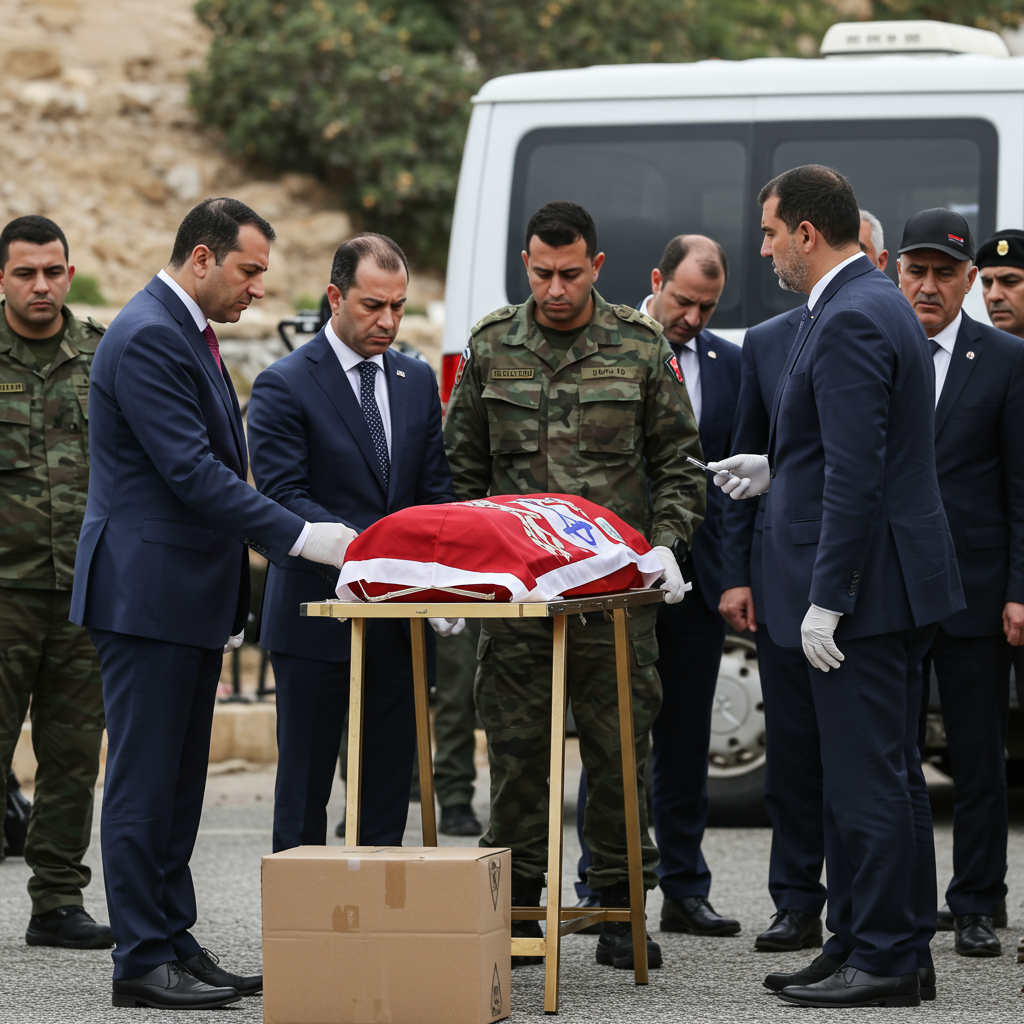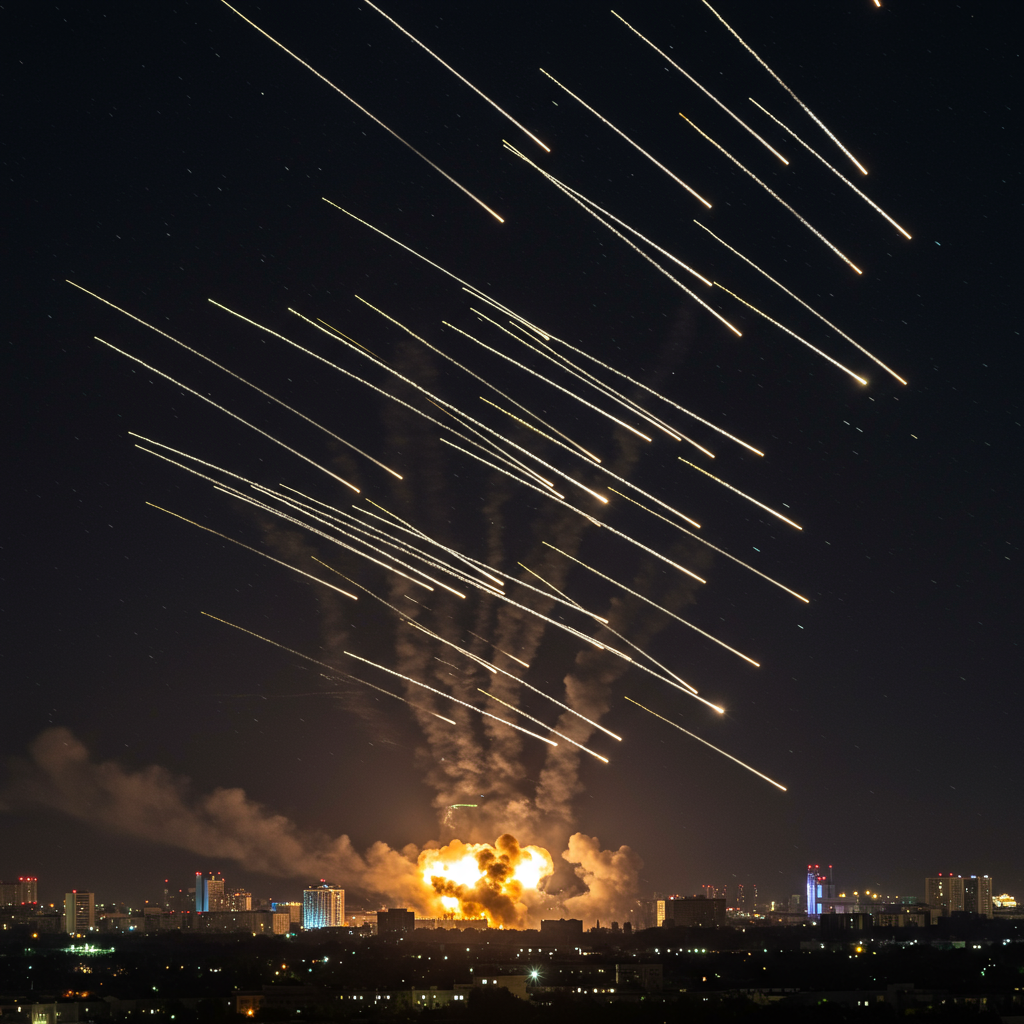After an agonizing 11-year wait, the remains of Israeli soldier Hadar Goldin have been returned from Gaza, bringing a painful chapter to a close for his family and the nation. Confirmed on November 9, 2025, this significant repatriation is a poignant development within the complex, U.S.-brokered truce between Israel and Hamas, offering a semblance of peace to those who tirelessly campaigned for his return. His story, deeply intertwined with the region’s enduring conflict, symbolizes the profound human cost and the relentless pursuit of closure for fallen soldiers.
Hadar Goldin: A National Symbol’s Return After 11 Years
On Sunday, November 9, 2025, Israel officially confirmed the receipt of the Hadar Goldin remains, a soldier whose body had been held in Gaza since 2014. This long-awaited return marks the end of an agonizing 11-year saga for his family, the nation, and the Israeli military. Goldin, then a promising 23-year-old artist and newly engaged, was killed tragically two hours after a ceasefire in the 2014 Israel-Hamas conflict. His protracted captivity transformed him into a powerful national symbol, embodying Israel’s unwavering commitment to its fallen.
The transfer, facilitated by Red Cross vehicles, saw Goldin’s remains transported from central Gaza into Israel. A solemn police convoy then carried the coffin to the Abu Kabir Forensic Institute in Tel Aviv for official identification. Along the route, dozens of Israelis gathered at intersections, holding Israeli flags in a quiet display of national grief and solidarity as the convoy passed, paying their last respects to a soldier finally coming home.
A Decade of Agony: The 2014 Ambush and Family’s Relentless Fight
Hadar Goldin’s tragic death occurred on August 1, 2014, during an ambush by Hamas fighters near Rafah in southern Gaza. He was part of an Israeli patrol dismantling tunnels when the attack unfolded, just two hours into a supposed 72-hour ceasefire. Following the firefight, Hamas forces dragged Goldin’s body into an underground tunnel. While initial reports considered the possibility of abduction, the Israeli military later concluded he was killed, based on forensic evidence including a blood-soaked shirt and prayer fringes found in the tunnel.
Despite the military’s determination, the absence of his body prevented a traditional Jewish burial, leaving his family in a state of perpetual limbo. His mother, Leah Goldin, poignantly described this enduring uncertainty as “a knife constantly making new cuts,” a pain deeper than any initial wound. The family held a “pseudo-funeral” at the military rabbis’ urging, yet true closure remained elusive without his physical return. Their relentless public campaign for 11 years highlighted the profound emotional and ethical dimensions of his captivity, with Leah Goldin powerfully articulating the ethical and religious imperative of repatriating her son’s remains as an essential component of the “sacrosanct pact” Israel holds with its citizens.
She felt that Hadar, as a soldier who went to combat, had been “abandoned,” and both his and their family’s humanitarian rights “destroyed” by the prolonged holding of his body. Earlier this year, they marked a somber 4,000 days since his body was taken. Following the devastating October 7, 2023, attacks, the Goldins initially found themselves in a unique, painful position. As new families grappled with the abduction of their loved ones, the Goldins, long symbols of an unresolved past, were sometimes “shunned,” told, “‘we aren’t like you, our kids will come back soon,'” highlighting the profound isolation of their specific, protracted struggle for hostage repatriation.
Repatriation as a Cornerstone of the U.S.-Brokered Truce
The return of the Hadar Goldin remains is a pivotal moment within the ongoing U.S.-brokered ceasefire agreement, which began on October 10. This complex Israel-Hamas truce mandates the repatriation of all hostage remains held by militant groups in Gaza. While progress has been slow and often marred by skirmishes, Goldin’s return signifies a breakthrough in fulfilling these terms.
Under the terms of the agreement, for each Israeli hostage’s remains returned, Israel has committed to releasing the remains of 15 Palestinians. To date, 23 sets of Israeli hostage remains have been repatriated by militants. Ahmed Dheir, director of forensic medicine at Nasser Hospital in Khan Younis, reported that 300 Palestinian remains have been returned, with 89 identified, underscoring the scale of this complex exchange. Prime Minister Benjamin Netanyahu acknowledged the “great agony” of the Goldin family campaign, expressing relief that they could now provide Hadar with a proper Jewish burial. His statement reaffirmed the national commitment to bring all fallen soldiers home.
Complex Negotiations and Unresolved Questions
The path to Goldin’s return was fraught with intense ceasefire negotiations and geopolitical maneuvers. Israeli media, citing anonymous officials, had previously suggested Hamas was leveraging Goldin’s body. They reportedly hoped to negotiate safe passage for over 100 militants surrounded by Israeli forces in Rafah’s “yellow zone.” However, Gila Gamliel, Israel’s Minister of Innovation, Science, and Technology, firmly refuted any notion of a “deal within a deal.” She stated on Army Radio that existing agreements are guaranteed by mediators and should not be “reopened.” Hamas, while acknowledging clashes in the yellow zone, made no public comment on these alleged exchange demands.
Diplomatic engagement remains crucial. Figures like Jared Kushner, a key architect of the U.S. 20-point ceasefire plan, have been actively involved in pressing ahead with truce efforts. His return to Israel highlights the high-level international mediation underpinning these sensitive discussions, which extend beyond immediate repatriations to include future phases like humanitarian aid and postwar Gaza governance.
The Broader Context: Other Returns and the Human Cost
While Goldin’s return marks a significant closure, Israel’s mission to bring home all its fallen and captured citizens continues. Earlier this year, Israel also recovered the remains of another soldier from the 2014 Gaza conflict, Oron Shaul, whose body had been held by Hamas. The recent period has seen further repatriations. Lior Rudaeff, a 61-year-old Israeli-Argentinian taken hostage on October 7, 2023, was confirmed deceased and his body recovered. Similarly, the funeral of Israeli-American Staff Sgt. Itay Chen, whose body was also returned from Gaza, took place on the same day Goldin’s remains arrived in Tel Aviv.
Even with these returns, the remains of four hostages taken in the devastating October 7, 2023, attack are still believed to be held in Gaza. Prime Minister Netanyahu reiterated Israel’s steadfast commitment to this enduring national pledge, even referencing the historical case of Eli Cohen, an Israeli spy hanged in Damascus in 1965. This deeply personal story unfolds against the grim backdrop of the ongoing conflict, which escalated dramatically after the Hamas-led attacks on southern Israel on October 7, 2023. That devastating day resulted in the deaths of approximately 1,200 people, predominantly civilians, and the abduction of 251 individuals. The ensuing Israeli military offensive in Gaza has led to a catastrophic humanitarian crisis. According to Gaza’s Health Ministry, whose detailed records are generally considered reliable by independent experts, the number of Palestinians killed in Gaza has tragically risen to 69,176. Efforts to recover and identify remains, both Israeli and Palestinian, remain a challenging and critical aspect of the fragile ceasefire, reflecting the profound human cost of the protracted geopolitical tensions.
Frequently Asked Questions
What is the background of Hadar Goldin’s captivity and return?
Hadar Goldin was a 23-year-old Israeli soldier killed during an ambush by Hamas fighters near Rafah, Gaza, on August 1, 2014. His death occurred just two hours into a ceasefire, and his body was subsequently taken by Hamas. For 11 years, his remains were held, making him the only Israeli soldier whose body predated the current conflict. His family waged a tireless public campaign for his return, becoming a national symbol in Israel. On November 9, 2025, his remains were finally transferred from Gaza to Israel via the Red Cross, bringing closure after a decade-long wait.
How does Hadar Goldin’s return fit into the wider Israel-Hamas truce agreement?
The repatriation of Hadar Goldin’s remains is a significant development within the U.S.-brokered ceasefire that began on October 10. This agreement mandates the return of all hostage remains held by militant groups. The truce operates on an exchange mechanism where, for each Israeli hostage’s remains repatriated, Israel releases the remains of 15 Palestinians. Goldin’s return is part of a larger ongoing effort to fulfill these terms, with 23 Israeli hostage remains returned so far and around 300 Palestinian remains also repatriated.
What impact does this repatriation have on ongoing efforts to recover other Israeli remains?
The return of Hadar Goldin’s remains provides a crucial precedent and renewed hope for families still awaiting the return of their loved ones. It underscores the Israeli government’s commitment, reiterated by Prime Minister Benjamin Netanyahu, to bringing home all fallen and captured citizens, including those taken in the October 7, 2023, attacks and even historical cases like Eli Cohen. While four deceased hostages from the October 7 attacks still remain in Gaza, Goldin’s return demonstrates that persistent diplomatic efforts and negotiations can eventually yield results, despite the complex and often faltering nature of the truce.
Conclusion
The repatriation of Hadar Goldin’s remains closes an agonizing chapter for his family and for Israel, marking a poignant moment of closure after over a decade of relentless struggle. While his return offers a glimmer of hope and demonstrates the potential for negotiated outcomes, it also highlights the immense humanitarian challenges that persist amidst the ongoing conflict. As efforts continue to recover other Israeli remains and navigate the complexities of the U.S.-brokered truce, Goldin’s story remains a powerful testament to national resilience and the profound, personal cost of enduring geopolitical tensions.




